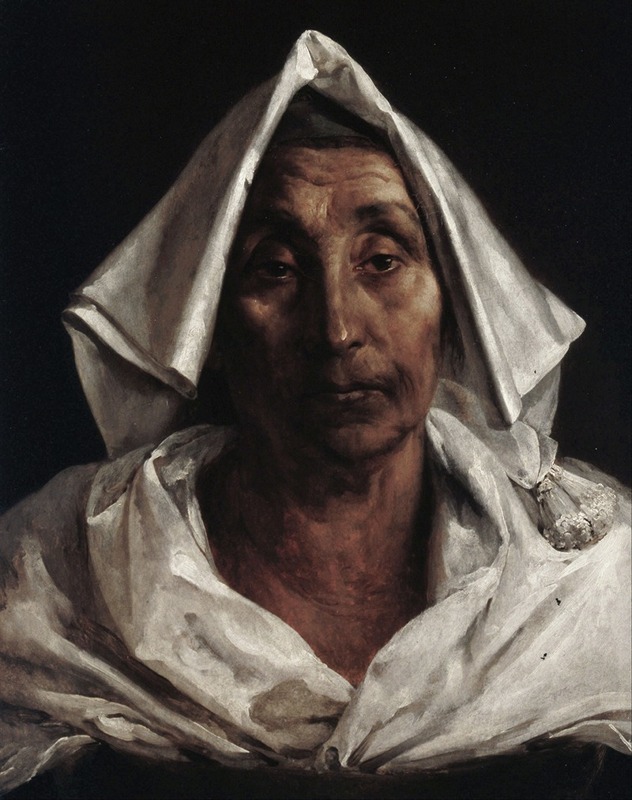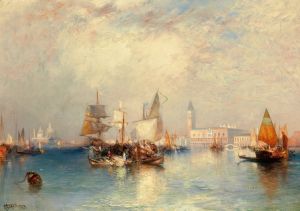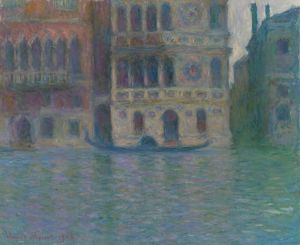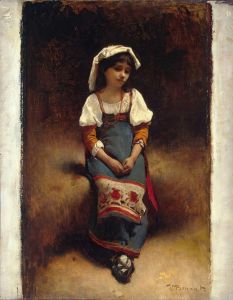
The Old Italian Woman
A hand-painted replica of Théodore Géricault’s masterpiece The Old Italian Woman, meticulously crafted by professional artists to capture the true essence of the original. Each piece is created with museum-quality canvas and rare mineral pigments, carefully painted by experienced artists with delicate brushstrokes and rich, layered colors to perfectly recreate the texture of the original artwork. Unlike machine-printed reproductions, this hand-painted version brings the painting to life, infused with the artist’s emotions and skill in every stroke. Whether for personal collection or home decoration, it instantly elevates the artistic atmosphere of any space.
Théodore Géricault, a prominent French Romantic painter, is best known for his masterpiece "The Raft of the Medusa." However, his oeuvre includes a variety of other works, including portraits and studies that reflect his keen interest in human emotion and expression. Among these is "The Old Italian Woman," a painting that, while not as widely recognized as some of his other works, showcases Géricault's skill in capturing the depth and character of his subjects.
"The Old Italian Woman" is a portrait that exemplifies Géricault's fascination with the human condition. Painted during a period when he was exploring themes of suffering and resilience, this work is a testament to his ability to convey complex emotions through portraiture. The painting features an elderly woman, whose face is marked by the passage of time, reflecting both her age and the experiences she has endured. Her expression is one of contemplation, perhaps tinged with melancholy, which invites viewers to ponder her life story.
Géricault's technique in this painting is noteworthy for its attention to detail and the realistic portrayal of the woman's features. The texture of her skin, the lines etched into her face, and the subtle play of light and shadow all contribute to a lifelike representation that is both intimate and respectful. This attention to detail is characteristic of Géricault's work, as he often sought to depict his subjects with a sense of authenticity and empathy.
The background of the painting is relatively simple, allowing the viewer to focus entirely on the subject. This compositional choice is typical of Géricault's portraits, where the emphasis is placed on the individual rather than their surroundings. By isolating the figure against a plain backdrop, Géricault ensures that the viewer's attention is drawn to the woman's expression and the story it conveys.
While "The Old Italian Woman" may not be as famous as some of Géricault's other works, it is an important piece that reflects his interest in portraying the dignity and complexity of ordinary people. This painting, like many of his portraits, demonstrates Géricault's commitment to exploring the depths of human emotion and his ability to capture the essence of his subjects with sensitivity and precision.
Géricault's work, including "The Old Italian Woman," had a significant influence on the development of Romantic art in France. His focus on realism and emotional depth paved the way for future artists who sought to explore similar themes in their work. Although Géricault's career was tragically cut short by his untimely death at the age of 32, his legacy endures through his powerful and evocative paintings.
In summary, "The Old Italian Woman" is a compelling example of Théodore Géricault's portraiture, highlighting his skill in capturing the human spirit. Through this painting, Géricault invites viewers to engage with the subject on a personal level, offering a glimpse into the life and emotions of an individual who might otherwise remain unnoticed.


















